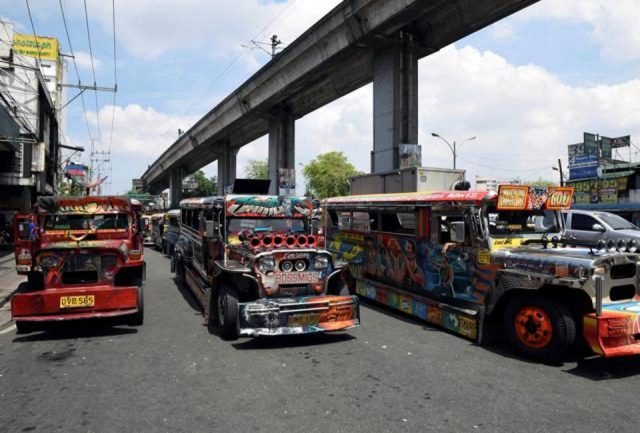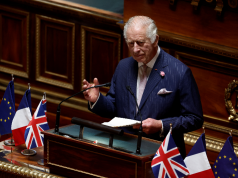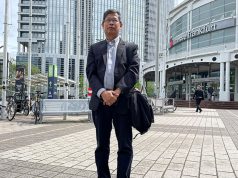BONN, Germany — For two days in October, Metro Manila — a megacity already plagued by daily snarling traffic and a disorganized mass transit system — bore the brunt of a transport strike to protest government’s impending jeepney modernization program.
In response, Malacañang suspended classes and government work, while commuters were stranded for hours due to a lack of alternative transport.
The government’s public transport reform program aims, among other things, to replace public utility vehicles 15 years and older with supposedly more efficient and environmentally sustainable vehicles by 2020.
Transport groups, however, have criticized the program for what they see as a glaring shortcoming: the new vehicles would cost at least P1 million, a price too steep for ordinary jeepney drivers who earn less than P1,000 a day.
In a country where transportation systems are privately owned, the cost of modernization would be a clear burden to the estimated 500,000 jeepney drivers and small operators.
“It could lead to massive loss of livelihood,” the Bagong Alyansang Makabayan said in a statement.
The jeepney modernization program
The Department of Transportation envisions a fully modernized and efficient transport system for the country by 2020.
In its PUV modernization program, a bus rapid transit will replace the current bus system in Metro Manila and other cities, route rationalization will be implemented, and old dilapidated PUVs will be replaced with newer and more efficient models.
Aside from solving the perennial problem of traffic in Metro Manila, the program also seeks to address pollution caused by diesel-powered vehicles.
According to the DOTr, 90% of jeepneys nationwide are 15 years-old and beyond, and spew toxic fumes and harmful greenhouse gases. In Metro Manila, one of the most polluted cities in the world, 17% of air pollution is caused by jeepneys, the DOTr says.
The jeepney modernization program also seeks to lower emissions caused by the transport sector, which accounts for 34% of the Philippines’ total emissions. This is in line with the country’s pledge to reduce emissions as mandated by the Paris Agreement.
Paris Agreement
The Paris Agreement is the first global climate treaty that aims to limit global warming temperatures well below 2˚C by cutting carbon emissions dramatically. The Philippines ratified the agreement early this year, despite President Rodrigo Duterte’s initial refusal to sign it.
In a presentation, the DOTr says that by phasing out old jeepneys, the Philippines could potentially cut greenhouse gas emissions by 22.36 million tons by 2030.
Through various mitigation programs, the Philippines could cut its GHG emissions by 148 million tons in 2030, according to the Climate Change Commission.
More private vehicles on the road
However, a growing trend in vehicle ownership in the country could also mean an increase in emissions for the transport sector, which is responsible for 13% of the country’s total emissions.
In 2013, there were more than 800,000 privately owned vehicles in the country, with at least 400,000 in the National Capital Region , according to the Land Transportation Office. Public utility vehicles numbered around 209,000.
Some 47% of Filipinos do not own a car and most commuters rely on land-based transportation.
Last year, the Philippines posted an all-time high of 417,000 new vehicles sold, boosting the government’s Comprehensive Automotive Resurgence Strategy — a program specifically targeting investments in the automotive industry.
The country is expected to become a major automotive market in Southeast Asia by 2020, largely due to policies such as CARS.
Most, if not all, vehicles in the country are gas or diesel-powered. Electric cars and hybrid units are rarely seen on the road as these are too pricey for the average Filipino buyer, thus compounding the limited options for environmentally sustainable transport.
An increase in cars on the road may also mean heavier traffic congestion for major cities such as Metro Manila, Cebu and Davao.
Prototype for new ‘jeepneys’
Last October, the DOTr and Department of Trade and Industry hosted an expo that showcased the prototype of the “new” jeepneys: slick versions of the Filipino mass transit staple with efficient engines that supposedly complied with international standards.
The vehicles are equipped with Euro 4 engines or electrically powered engines, with solar panel roofs. They will also feature speed-limiters, an automated fare collection system, GPS, disability access features, and even wifi onboard for commuters.
The new models, produced abroad but assembled locally, were made according to the requirements of the DOTr to promote environmental standards and road safety.
With the launch of the prototype vehicles, transport groups are saying the modernization program is meant to phase-out the jeepney, an iconic Filipino symbol of mass transport with origins dating to the American colonization era.
‘LTFRB: Modernize not phase-out’
“There will still be jeepneys on the road but the question is, what kinds of vehicles do we want on the road? We want to introduce reliable and environmentally-friendly vehicles to public commuters,” Aileen Lizada, spokesperson of the Land Transportation Franchising Board, said at a press conference last February.
Lizada also added that the government plans on buying a few of the 15-year old jeepneys. She says the modernization program intends to provide better transportation options for the commuting public, and serve the greater good instead of a few drivers and operators.
Loans for displaced drivers
The DOTr says loans will be available to jeepney drivers to purchase the new vehicles.
However, urban poor group Kadamay says the loans will be very difficult to pay for drivers expected to shoulder monthly amortizations estimated at P27,000.
Transport groups such as Piston say that they are not opposed to the modernization of the transport system.
They agree that the current transport system must be reformed to make it safer and more efficient for the public.
But, they stress, this should not be at the expense of jeepney drivers who will be rendered jobless by the program due to the high capital needed to buy the new vehicle models and pay the franchise fees.
Kadamay claims the government will be charging P7 million to apply for a franchise under the modernization program.
“The modernization program is an attack to poor drivers and small operators,” Francisco Paguyaman, chair of Kadamay in Northern Mindanao, says.
Duterte: ‘Modernize or else’
Despite mounting protests and transport strikes, President Rodrigo Duterte has signaled his approval of the transport reform program and even threatened to remove outmoded jeepeneys on the road by 2018.
“If you can’t modernize, leave. You’re poor? Son of a bitch, go ahead. Suffer in poverty and hunger. I don’t care,” he said.
Just transition, a growing issue among trade unions groups around the world, seeks to approach the clean energy revolution with equity and a consideration for labor and human rights.
As more countries move away from fossil fuel dependence, workers who have been employed in the ‘dirty energy’ sector may find their skills rendered obsolete or irrelevant.
The concept of just transition has been a hot topic during high-level climate talks in Bonn, Germany as more governments of developed nations and private sector members engage in dialogues on how to protect workers and transition them into the renewable energy sector, as more affordable technologies and investments on renewables are forthcoming.
The Philippines, which relies heavily on fossil fuels for its transport sector, has the potential to generate as many as 163,000 ‘green jobs’ in the transport industry, according to a report by the International Labor Organization.
In a study released by the Friedrich Ebert Stiftung Foundation, even developed countries that are at the forefront of the clean energy transition have not always delivered social equity and justice to laborers and workers affected by the phase out of fossil fuel energy.
Aside from aiming for more investments on renewable energy and higher emissions reduction, the study called on countries to approach environmental sustainability and climate change with a human rights perspective.
“The energy transition is so far-reaching in its implications, and deeply interwoven with socioeconomic development, power structures, and people’s livelihoods,” the study says.
Junk current DOTr framework, engage stakeholders in dialogue – Piston
“What we want is to junk the current framework for modernization and start anew through a dialogue with drivers, the commuting public, experts,” George San Mateo, president of Piston, says.
Despite the loss of one or two days of income, San Mateo says that jeepney drivers all over the country are willing to sacrifice earnings to push for a more equitable transport reform program.
“What we are fighting for is livelihood,” he says.










